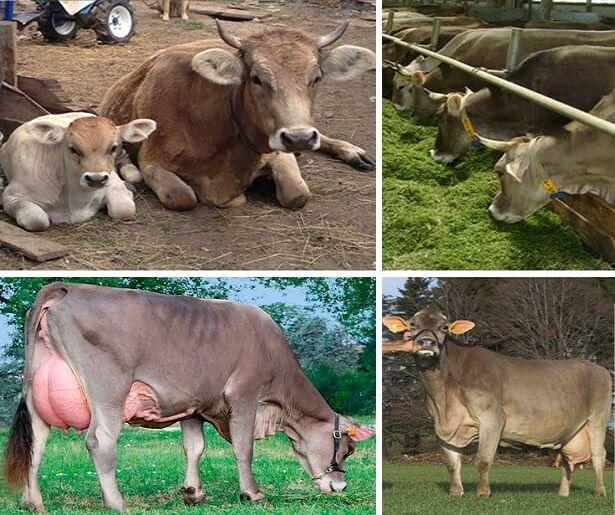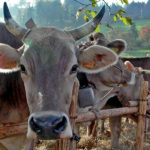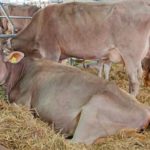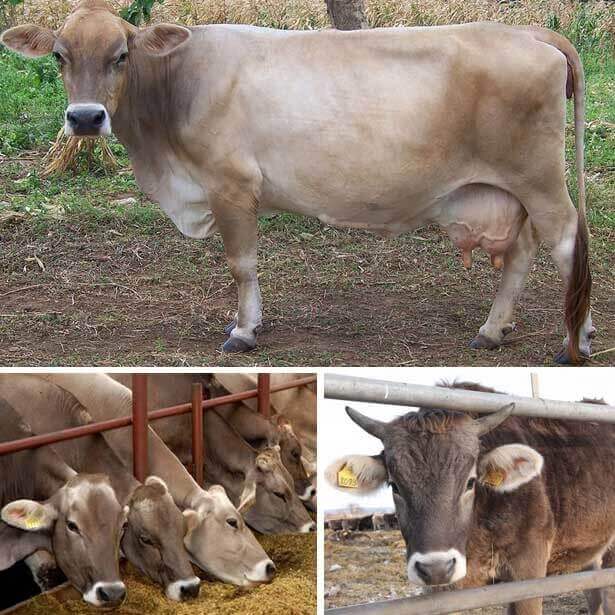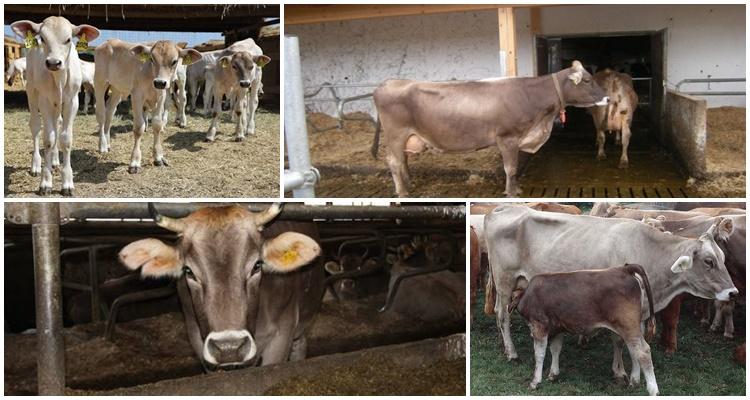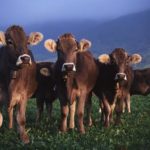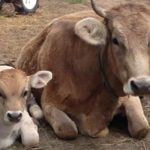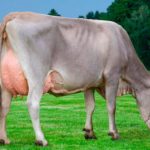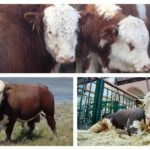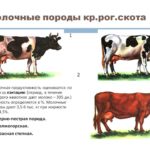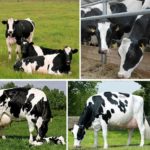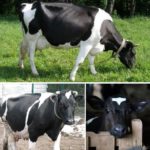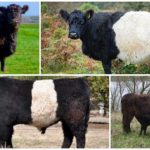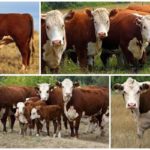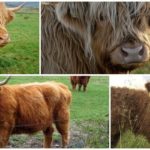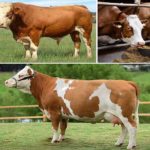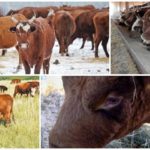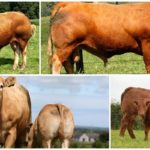Universal, or meat and dairy, breeds of livestock were bred to simultaneously produce two types of products - milk and meat. Among such animals, representatives of the Swiss cow breeds. Let's consider the description and characteristics of this type of livestock, their advantages and disadvantages, how to keep them, feed them, breed them at home, and take care of their health.
Origin story
The Schwyz breed was bred in Switzerland, in the Alpine mountains, in the canton of Schwyz, from which it received its name. At first, cows were not only raised for milk and meat, but also used as draft animals. In the 19th century they were already common in neighboring countries. Until now, the largest number of Swiss cows is located there.
In Russia, Swiss cows appeared at the beginning of the 20th century; in Soviet times they were used as improvers of local livestock. Currently, farms for raising cattle of this breed are located in the Stavropol and Krasnodar Territories, in the Smolensk, Nizhny Novgorod, Bryansk and Tula regions.
Description and characteristics of the Swiss breed
According to their productive characteristics, the Swedish can be classified as both dairy and beef cows. Within the breed there are 2 directions - meat-dairy and milk-meat, which is considered a feature of the breed. Despite the fact that the animals are very close genetically, representatives of these trends have different indicators of milk yield and slaughter yield of meat.
The head of the Swiss is small, with a wide forehead. The animals have horns (light colored with black tips), but they are short and, due to the calm nature of cows, they are rarely used. The exterior of any Swiss cow, both meat and dairy, tends to have meat proportions. Their muscles are well developed, their body is rectangular, their chest is deep, their legs and neck are short. The udder is large or medium in size, the nipples are developed, the belly is rounded.
The color of purebred Swiss cows is gray-beige or ashy (the animals can be easily distinguished from representatives of other breeds by their original shade), but brown Swiss cows were bred in Russia after crossing with local cattle. Brown cattle are not considered purebred, but their productive characteristics do not suffer from this. The nose is dark, the lips and chin are light.
In a year, a Swiss cow can produce 3.5 thousand kg of milk, and it will be fat (3.6-4.2%) and with a high percentage of protein (at least 3.2%). Record milk yields are 9-10 tons per year. Given the high fat content of their milk, cows are well suited for raising on farms that produce butter and hard cheeses.
The excellent quality of the milk is explained by the fact that the famous Swiss cheese was made from it. Swiss cows manage to show the highest milk yields when kept freely on pasture. Schwitzes can also be good beef cows. They are distinguished by intensive weight gain and high slaughter yield (62%).
Newborn calves weigh 35-40 kg, if fed generously, they can gain 1-1.1 kg each day. By the age of one year, heifers can reach 250 kg, bulls - 300 kg. You can slaughter 1.5-year-old animals, which by this time can weigh 350-380 kg. They are kept in fattening for no more than 2-3 years, after which they become less profitable.
Advantages and disadvantages
Despite its shortcomings, the breed is considered one of the most promising.
Conditions of detention and care
The Swiss breed is characterized by its whimsical diet and living conditions. Violations of cultivation standards always affect their productivity.
Summer walking area
Meat and dairy breeds are raised using a stall-pasture system. It is not recommended to keep Swiss cows indoors without walking, as milk yield is reduced. If it is not possible herd cows in the pasture, near the barn, you need to organize a walking area. Its dimensions must be large enough for the animals to move freely (15 sq. m per individual).
Animals should spend at least several hours a day walking. Walking increases blood flow, prevents swelling of the legs and arthritis, hoof diseases, and excessive growth of the hoof horn.
Arrangement of the barn
To raise cows at home, it is recommended to build a special room. It should be spacious, well lit, the windows should have vents for ventilation or be equipped with a ventilation system. There is no need to heat the barn; the cows produce enough heat to keep them warm in the winter, but it should not be drafty. To insulate walls, you can use standard construction insulation.
Each Swiss cow must be allocated a separate stall with a width of at least 1.5 m and a length of 3 m or a stall 3 by 3 m. It should have an individual feeder and drinker, a floor with a slight slope towards the rear wall to drain slurry.
If calves are not kept with their mothers, a separate room must be equipped for them, where they will be except during feeding time.In regions with cold climates, the calf barn needs to be insulated.
Conditions of detention
The conditions for keeping a Swiss cow are no different from the conditions recommended for other breeds of livestock. The temperature in the barn in winter should not fall below 5-10 ˚С, in summer it should not rise above 25 ˚С. Both cold and heat have a negative effect on the body of animals. The result is decreased productivity.
You need to pay attention to the cleanliness of the air and bedding. All livestock breeders know how much waste one cow can produce per day. All this should not be left indoors; animals should breathe fresh air and lie on clean straw. Lighting is natural, through large windows; to effectively supply light, their area should be equal to 1/10 of the area of the entire room.
Cleaning the barn
You need to put fresh straw on the floor in the stalls and change it when it gets dirty. Animals should not stand on dirty straw. Under unsatisfactory living conditions, they become ill with infectious diseases, despite their natural resistance to disease. Every month it is necessary to disinfect the premises and equipment.
Swiss cows need to be brushed every day. Cleaning has 2 goals - the animal’s skin gets rid of dirt and parasites, massage has a beneficial effect on their physical and mental state.
What is the breed fed?
You need to pay attention to the diet for Swiss cows. Cattle are fed fresh grass (or grazed on pasture) and hay in winter. This is the basis of nutrition for ruminants. It is advisable that the grass and hay contain clover and legumes. Additionally, they are given bran, root vegetables, vegetables, whole grains and chaff. Suitable for Swiss cows to keep on mixed feed.Feeding with combined feeds is convenient, especially for home keeping in conditions of lack of space for pastures and mowing. But it also has a drawback - due to the cost of feed, the cost of production also increases.
Calves and their mothers require special attention. Cows need to be fed a mixture of bran and grain; such nutrition will promote rapid recovery after calving and the growth of calves. Livestock breeders recommend the following feeding scheme for Swiss dogs: in the morning - hay and feed, plenty of water, in the middle of the day - hay and water, at the end of the day - hay with feed and water again. In addition to hay and feed, livestock need to be fed green and succulent feed - root crops and vegetables. They must first be crushed; if animals swallow large pieces, this will lead to digestive upset. Feeding regimen – 3 times a day. Each individual needs at least 45 kg of feed per day.
Breeding rules
There are not so many Schwyz cows in Russia; the breed is considered rare. Of course, for breeding in the home, and not just on farms, it is better to select purebred parents. But if it is not possible to purchase purebred bulls and cows, then you can use Schwitz to produce crossbred calves. It has been established that in terms of productive indicators they are almost not inferior to their purebred ancestors.
Heifers can be bred when they reach one and a half years old, bulls - 2 years old. Natural and artificial mating are possible. Pregnancy and childbirth in Swiss cattle occur without problems. Cows feed their calves conscientiously; they can be kept with their mothers or separately from them.
Animal health
There are no genetically determined hereditary diseases in the breed, and in general, Swiss cattle are in good health. But under poor housing conditions, cows can suffer from infectious diseases, their metabolism is upset, and productivity deteriorates. If you raise animals correctly, this does not happen.
Changing the place of residence does not affect the health of the Swiss. They easily adapt when transported to another location without experiencing stress. This is especially true for young animals.
Prospects and purchase
You can buy female or male Swiss at breeding farms. They can be purchased in Russia, but a purebred animal of the best blood should be looked for in European countries - Germany, Austria and Poland. The cost of a Swiss cow depends on its age and gender; it is more profitable to buy calves and raise an animal from them for your own breeding.
Schwyz cows are suitable for keeping on private farmsteads and small farms. If the breeding rules are followed, they will be able to realize the potential inherent in the breed. Swiss dogs can be raised in any region of Russia; they can perfectly adapt to the climate of any area.
The Schwyz breed is not one of the most common in Russia, but is excellent for keeping in any of its regions. In addition to productivity, cows have a good exterior and attractive color. They can be kept as a single specimen in a private yard for the needs of the family and stocked on farms for profit. Schwitz is a good source of excellent full-fat milk and quality meat.

